When it comes time to do some carpentry or construction work, you’re going to need the right tools for the job. Two of the most common tools for this type of work are framing nailers and brad nailers. But which one should you choose? Not sure whether you need a framing nailer or brad nailer? We’ll compare and contrast the two types of nailers so you can make an informed decision. We will also provide some tips on how to use them correctly and get the most out of your tool.
What Is a Framing Nailer?
A framing nailer is a type of pneumatic tool that is used to drive nails into wood or other materials. It is powered by compressed air, and uses a magazine to store the nails. Framing nailers are designed for heavy-duty applications such as construction work, and can drive nails much more quickly and efficiently than doing it by hand.
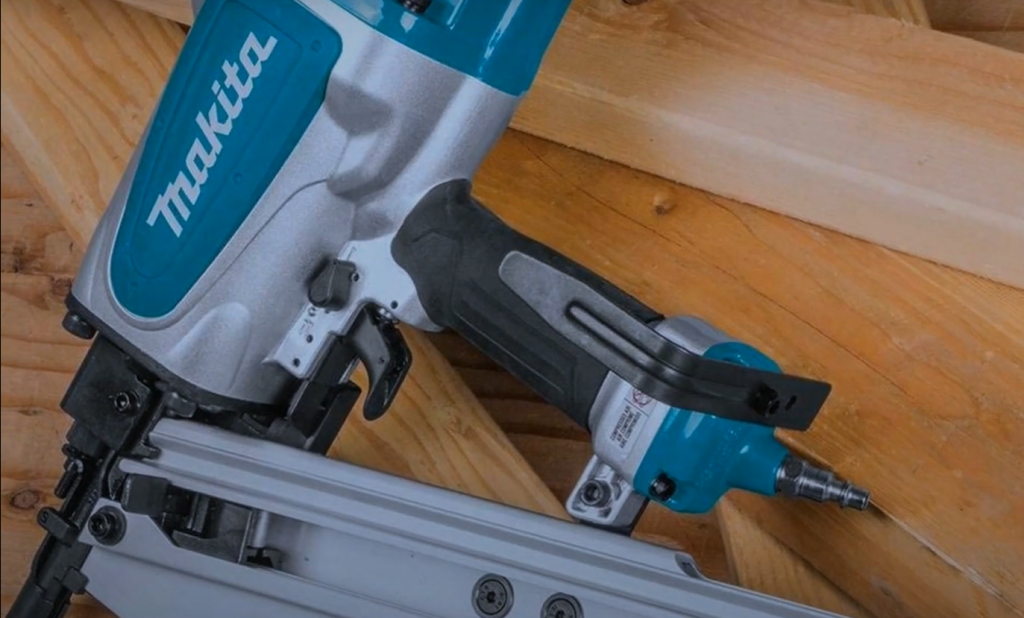
Framing nailers come in two main types: coil nailers and stick nailers. Coil nailers have a cylindrical magazine that holds the nails in coils. Stick nailers have a rectangular magazine that holds the nails in strips (or “sticks”). Both types of framing nailers have their advantages and disadvantages, which we will discuss later on in this article.
Framing nailers are also available in both cordless and corded versions. Cordless framing nailers are powered by battery, and offer the advantage of being more portable and easier to use. However, they tend to be less powerful than their corded counterparts, and the batteries will need to be regularly recharged. Corded framing nailers must be plugged into an electrical outlet, but they offer more power and run-time than cordless models. [1]
When choosing a framing nailer, it is important to consider what type of project you will be using it for. If you only need to do light carpentry work around the house, then a brad nailer might be a better choice (we will discuss brad nailers in more detail later on). However, if you are doing heavier construction work, then a framing nailer is the better tool for the job.
Framing nailers are available in a variety of sizes, from small to large.
When selecting a framing nailer, you should also consider the type of nails that you will be using. The most common type of nails for framing nailers are clipped head nails and smooth shank nails. Clipped head nails have a small clip on the head that helps to keep them securely in place, while smooth shank nails have no clip and can be easily removed if necessary.
There are also two different types of magazine systems for framing nailers: side-loading and bottom-loading. Side-loading magazines are easier to load, but bottom-loading magazines offer a higher capacity (meaning you can store more nails in the magazine). [2]
What Is a Brad Nailer?
A brad nailer is a type of finishing nailer. As the name suggests, it fires nails that are smaller in diameter than those used in framing applications. Brad nails are typically 18 gauge and range in length from ¾” to just over two inches long.
While you can use a brad nailer for some light-duty framing applications, it’s really designed for attaching trim, molding, and other decorative elements to finished walls and ceilings. The smaller size of the nails means they’re less likely to split delicate woodworking projects.
Brad nailers come in both pneumatic (air-powered) and cordless models. Pneumatic brad nailers are more powerful and can handle longer nails, but they require an air compressor. Brad nailers that use batteries are lighter, but their batteries add weight and make them more difficult to work in confined places. [3]
The first thing you need to decide is whether you want a pneumatic or cordless model. Compressed air is required for pneumatic versions since they are powered by compressed air. They’re more powerful than cordless models and can handle longer nails, but they’re less convenient to use because you have to lug around the air compressor.
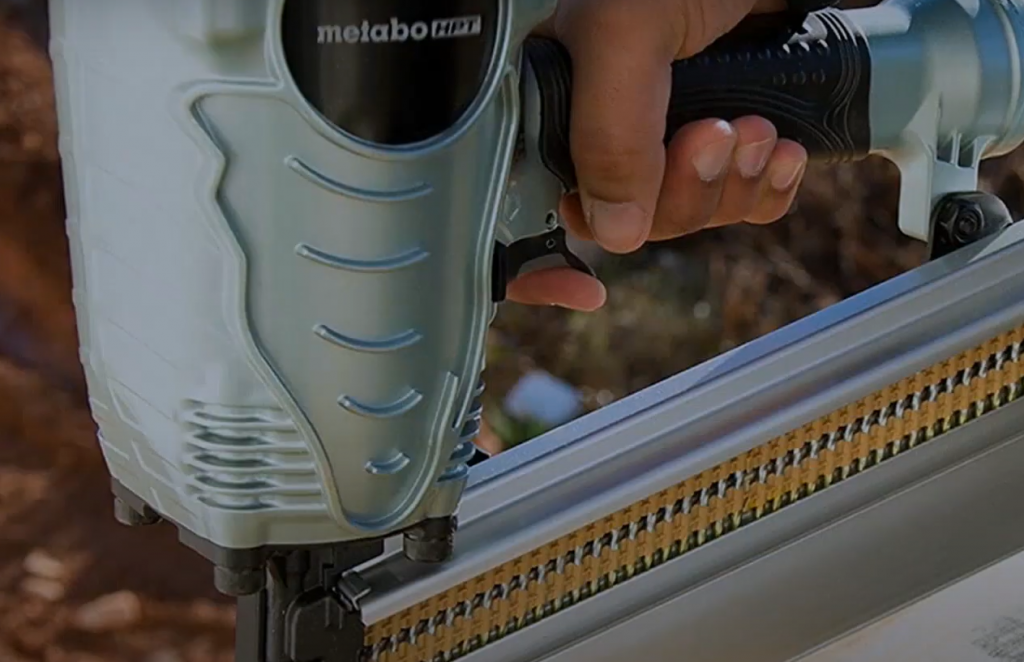
Cordless models are powered by batteries, so they’re more convenient to use but the batteries add weight and can make them harder to maneuver in tight spaces. If you decide on a cordless model, make sure it’s compatible with the battery you already have or plan to buy.
You also need to decide on the firing mode. Sequential mode means you have to pull the trigger for each nail. This is more precise but it takes longer. Bump fire mode means you can hold down the trigger and the nailer will fire nails as long as you keep your finger on the trigger. This is faster but it’s less precise.
Finally, take a look at the safety features offered by different models. Some nailers have a trigger lock to prevent accidental firing. Some models have an anti-dry fire mechanism to stop the nailer from firing when no nails are left in the magazine.
After taking all of these factors into account, you can then choose the brad nailer that best suits your needs. [4]
Brad Nailers are powered by either compressed air, or cordless battery power. Pneumatic models require an air compressor, but are more powerful than cordless models and can handle longer nails. Cordless models are more convenient to use, but the batteries add weight and can make them harder to maneuver in tight spaces.
When choosing a Brad Nailer, you will also need to decide on the firing mode. Sequential mode means you have to pull the trigger for each nail, and is more precise but takes longer. Bump fire mode means you can hold down the trigger and the nailer will fire nails as long as you keep your finger on the trigger, which is faster but less precise.
Finally, take a look at the safety features offered by different models before making your choice. Some nailers have a trigger lock to prevent accidental firing, while others have an anti-dry fire mechanism that prevents firing when there are no nails left in the magazine.
Brad Nailer vs Framing Nailer
The brad nailer and the frame nailer are two of the most popular types of nail guns used by home improvement projects. At a first glance, these tools may look the same, but they are actually quite different and have different functions. In this post, we’ll go through the key distinctions between brad nailers and framing nailers so you can choose which one is right for your project.
These nails are perfect for delicate trim work, molding, or other light-duty tasks where a finishing touch is required. Brad nails are also easy to remove if you need to make any adjustments to your work.A framing nailer, on the other hand, is a much heavier-duty tool that uses thicker nails, usually 16-gauge or greater. These nails are designed for tougher tasks like building decks, framing walls, or attaching siding. Framing nails are more difficult to remove than brad nails, so they’re not as well-suited for projects where you might need to make adjustments later on.
If you’re working on something delicate where a finishing touch is required, go with a brad nailer. A framing nailer is a must-have tool if you’re working on projects that need a lot of holding power. And if you’re ever unsure, err on the side of caution and go with the heavier-duty tool.
Next time you’re starting a home improvement project, reach for the right tool for the job by choosing a brad nailer or framing nailer based on your needs. And if you’re ever unsure which one to use, remember that a framing nailer can always do the job of a brad nailer, but the reverse is not true. [5] With this guide in hand, you’ll be ready to tackle anything that comes your way.
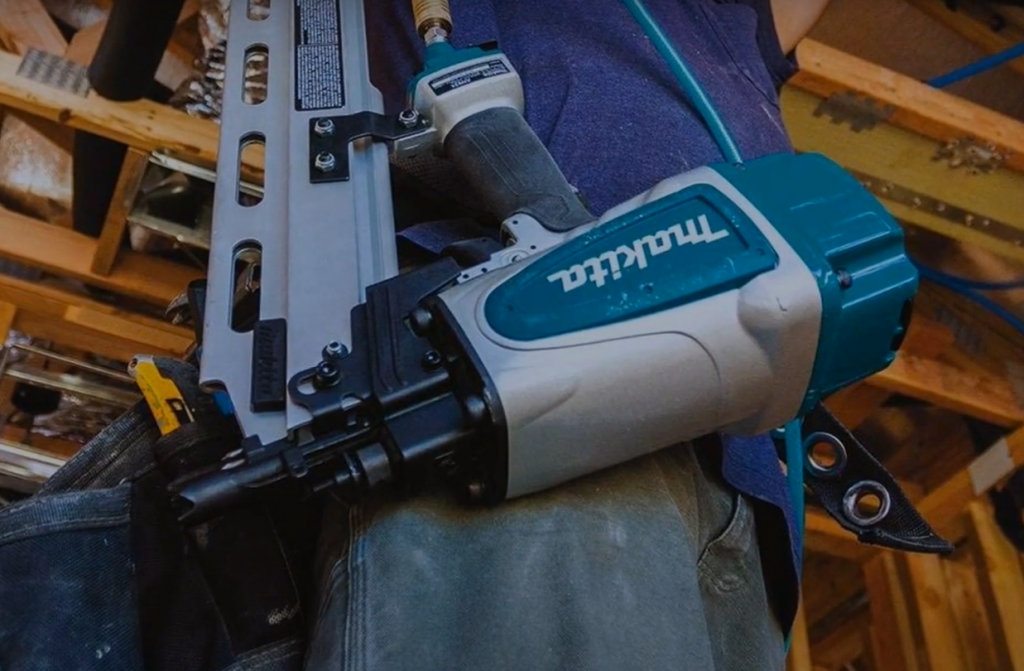
When it comes to home improvement projects, having the right tools on hand can make all the difference. And when it comes to nail guns, there are two main types you’re likely to come across: the brad nailer and the framing nailer. Though these tools may look similar at first glance, they are actually quite different and serve different purposes. In this article, we’ll break down the key differences between brad nailers and framing nailers so you can decide which one is right for your next project.
FAQ
What’s the difference between a brad nailer and a framing nailer?
The size of the nails that a brad nailer or framing nailer fires is the major distinction between the two. Brad nailers typically use smaller nails, such as 18 gauge or smaller. Most framing nailers use 16- or 15-gauge nails.
Brad nailers are good for light duty tasks like attaching trim or small moldings. They’re also good for delicate work where you don’t want to leave large holes that would be difficult to fill later.
Framing nailers are better suited for tougher jobs like attaching studs to walls or building decks. The larger nails they shoot will give you a stronger hold, which is important when working with heavier materials.
Another difference between the two types of nailers is the depth adjustment feature. Brad nailers will usually have a depth adjustment feature that lets you control how far the nails are driven into the wood. This is important for delicate work where you don’t want to split the wood or damage the surface.
Framing nailers generally don’t have a depth adjustment feature. This isn’t as big of a deal because most of the time you’ll be using them for tough jobs where you’re driving the nails all the way in anyway.
Finally, brad nailers are usually lighter and more compact than framing nailers. This makes them easier to handle and maneuver, which can be important when working in tight spaces.
It really depends on what you’re trying to do. If you’re working with delicate materials or need to be able to control the depth of your nails, a brad nailer is probably a better choice. If you’re doing tougher jobs that require more holding power, a framing nailer will be your best bet.
What is a framing nailer used for?
A framing nailer is a type of power tool that is used for driving nails into wood. It is commonly used by construction workers and carpenters for framing walls and roofs.
Framing nailers are available in both corded and cordless models. Cordless models are more expensive but offer greater mobility. They also require batteries, which can add to the cost.
The corded versions are less expensive to use, but they do require access to an electrical outlet. They are also heavier than cordless models, making them more difficult to maneuver around a worksite.
Both types of framing nailers use air pressure to drive nails into wood. Depending on the model, you will need anywhere between 70 and 120 PSI of air pressure.
Most framing nailers have a magazine that holds between 60 and 100 nails. The size of the nails varies depending on the model, but they are typically between two and three inches long.
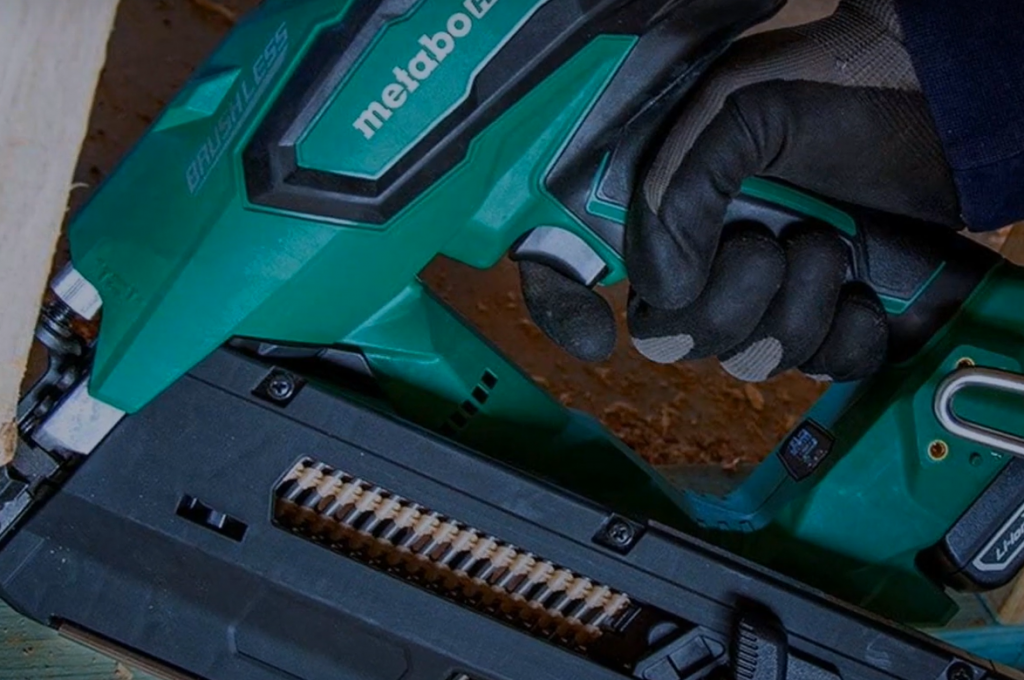
Framing nailers can be used for a variety of applications, including framing walls, roofs, decks, and floors. They can also be used for attaching plywood to studs or joists.
Framing nailers are available in both pneumatic and electric models. Pneumatic models are powered by air compressors, while electric models are powered by batteries or an electrical outlet.
Pneumatic models are more expensive than electric models but offer greater power and mobility. Electric models are less expensive but require an electrical outlet to operate.
Most framing nailers have a safety feature that prevents the tool from firing if there is no nail in the magazine. This safety feature is important to prevent accidental injuries.
Framing nailers are available in a variety of sizes and styles to suit different needs. There are also a number of accessories available, such as air hoses and compressors, that can be used with framing nailers.
What is a brand nailer good for?
A brand nailer is good for a number of things, including:
- Hanging drywall
- Attaching wood to concrete
- Framing walls
- Installing trim work
Basically, if you need to drive nails into something really tough, then a brand nailer is the tool for the job.
Well, that’s what we’re here to find out! In this comprehensive guide, we’ll be taking a look at three of the best framing nailers on the market today.
So without further ado, let’s get started!
The first brand we’ll be looking at is Dewalt. Dewalt is a name that’s synonymous with quality, and their framing nailer is no different. This boy can drive nails up to three and a half inches long into the toughest materials, making it perfect for even the most demanding jobs.
The next brand on our list is Paslode. Paslode is a reliable name in the industry, and their framing nailer meets the high standards set by Dewalt. Perfect for even the most challenging projects, this boy can drive nails that are three and a half inches long into the toughest materials.
What size nail gun do I need for 2×4?
This is a common question that we get asked all the time. The answer really depends on the project you are working on and what type of wood you will be using. If you are working with softwood, then you will need a smaller nail gun. For hardwood, you will need a larger nail gun.
If you are unsure of what size nail gun to get, we recommend going with a medium-sized one. This will give you the most flexibility when it comes to projects.
Another important factor to consider is the type of nails you will be using. For example, if you are using thicker nails, then you will need a bigger gun. On the other hand, if you are only using thin nails, then you can get away with a smaller gun.
These are the perfect size for most applications.Finally, you need to think about the power source of the nail gun. If you will be using it for long periods of time, then you will want to get a battery-powered one. This will save you from having to worry about cords or compressors.
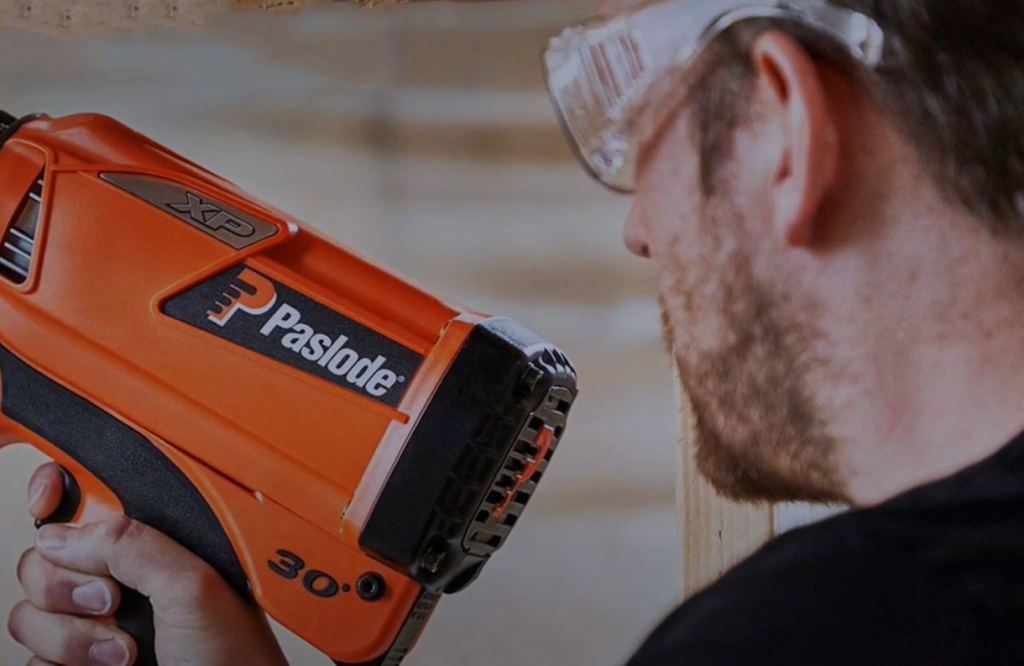
If you only plan on using the nail gun for occasional projects, then a corded model should suffice. Just make sure that you have a good quality compressor that can handle the job.
What degree of nail gun is best for framing?
With the myriad of nail guns on the market, it’s hard to know which one is right for you. It is important to select the right type of nail gun for your particular project in order to ensure optimal results.
For most framing applications, a 21-degree angle nail gun is ideal. This sort of nail gun has the ideal balance of power and maneuverability, making it ideal for confined areas. Furthermore, 21-degree angle nail guns can fire both clipped head and full round head nails, allowing you to more finely customize your project’s nails.
If you will be working in extremely tight spaces, however, a 30-degree angle nail gun may be a better option. These types of nail guns are incredibly compact and lightweight, making them easy to maneuver in even the tightest of spaces. Additionally, 30-degree angle nail guns can fire both clipped head and full round head nails, giving you more versatility when selecting nails for your project.
What do you use a 18 gauge brad nailer for?
A brad nailer is a small, hand-held machine that fires very thin nails, called brads. Brad nailers are most commonly used for trim work, such as attaching molding or baseboards to walls.
The advantage of using a brad nailer over a hammer and nails is that it’s much faster and easier. The nails are less likely to split the wood because they’re thinner.
If you’re doing any kind of finish work on your home – whether it’s building new cabinets or just adding some crown molding – then you’ll need a brad nailer.
A framing nailer is a much larger machine that fires much longer nails. These nails are typically three inches long, and they’re used for construction projects – like building walls or framing a house.
Framing nailers are also handheld, but they’re much heavier than brad nailers. And because the nails are so long, they can cause serious injury if you’re not careful.
So if you’re working on a construction project, you’ll need a framing nailer. But for most other jobs around the house, a brad nailer will do just fine.
What size nail gun do I need for framing?
It’s important to choose the right size nail gun for your project. If you’re working on a small project, a Brad Nailer will be sufficient. For larger projects, you’ll need a Framing Nailer. The following table provides a quick overview of the different sizes available:
- 18 gauge – Finish work and light trim
- 16 gauge – Heavy trim and molding
- 15 gauge – Siding, soffits, and sheathing
- 14 gauge – Roof decking and subfloors
As you can see, there is quite a range of options available. It’s important to select the right size for your project in order to avoid any damage to your materials.
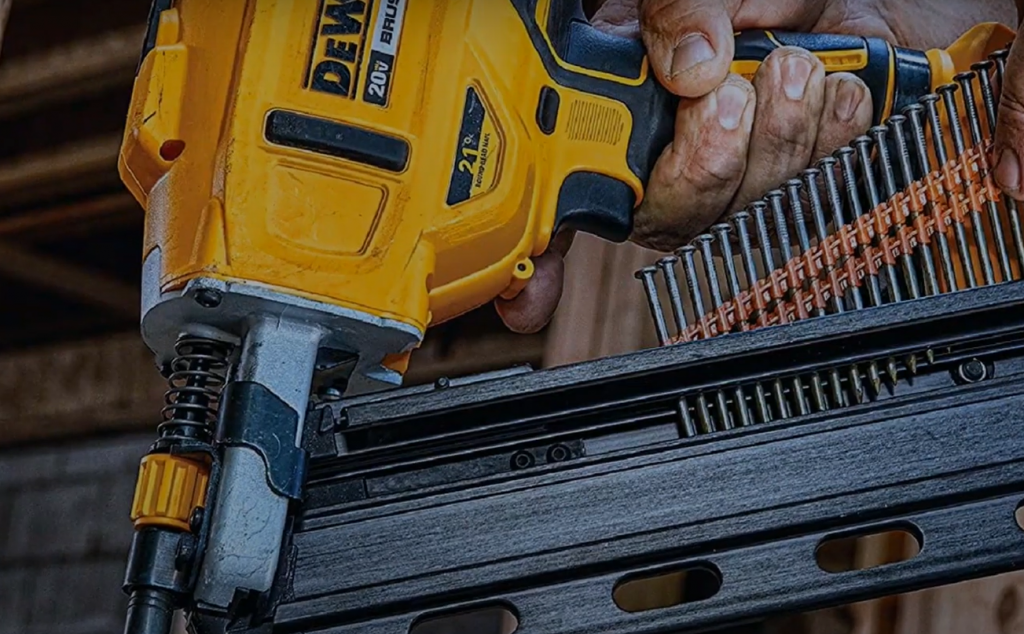
If you’re still not sure which size nail gun to choose, we recommend consulting with a professional. They will be able to advise you on the best option for your project.
Useful Video: Framing Nailer vs Brad Nailer
Conclusion
So, what’s the difference between a framing nailer and a brad nailer? The main difference is that framing nailers are designed for larger projects, while brad nailers are better suited for smaller jobs. If you’re not sure which one you need, think about the project you’re working on and the size of the nails you’ll be using. If you’re doing a large project that requires long nails, then a framing nailer is probably your best bet. However, if you’re working on a smaller project or you only need to use small nails, then a brad nailer will probably work just fine. We hope this guide was helpful. If you have any questions or suggestions, please feel free to leave a comment below. Thanks for reading!
References:
- https://sawsonskates.com/brad-nailer-vs-framing-nailer/#:~:text=Framing%20nailers%20are%20most%20often,projects%20such%20as%20picture%20frames.
- https://toolstheory.com/brad-nailer-vs-finish-nailer/
- https://woodthrive.com/nail-gun/
- https://www.about-air-compressors.com/brad-nailer-vs-framing-nailer/
- https://www.finepowertools.com/nailers/brad-nailer-vs-framing-nailer/

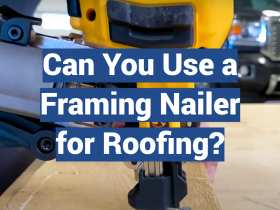
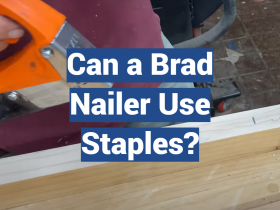
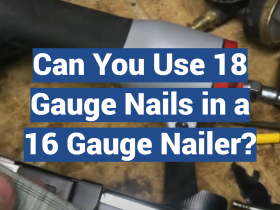
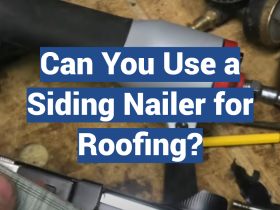
Leave a Reply